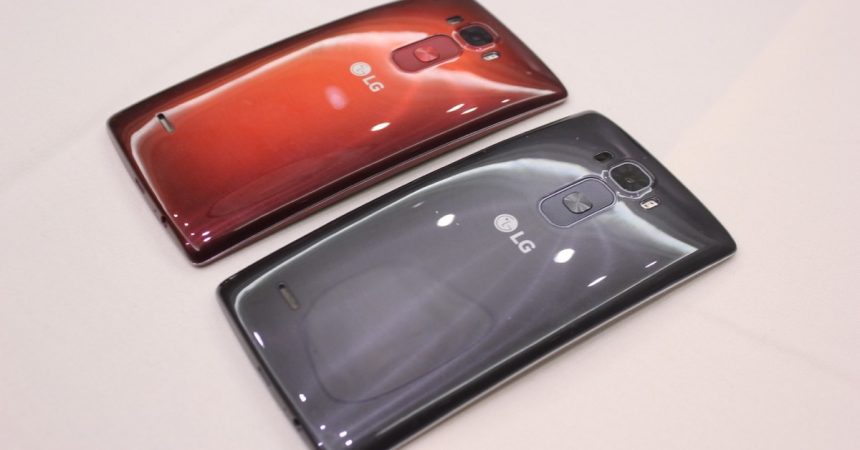The LG G Flex 2
The G Flex is one of LG’s interesting innovations that can easily be described as weird. However, its 6” P-OLED display and curved battery among others make it seem more like an ongoing concept; something that is not yet really ready for production. As such, LG developed its “evolved” counterpart, the LG G Flex 2, which is expectedly more refined with a more mainstream (and therefore acceptable) design.
The specifications of the LG G Flex 2 include: a Qualcomm Snapdragon 810 octacore processor with an Android 5.0.1 operating system and a 2gb RAM; an Adreno 430 GPU; a 5.5” P-OLED flexible display that has Gorilla Glas 3 and 1920×1080 LG Dura Guard Glass; a 3000mAh non-removable battery; a 16 to 32gb storage and a MicroSD card slot; a 13mp rear camera that has OIS and laser autofocus and a 2.1mp front camera; connectivity via WiFi AC, Bluetooth 4.1, infrared, NFC, 3G, and LTE; and weighs 152 grams.
- Design
Thankfully, LG successfully managed to solve most of the problems identified with the G Flex 2’s predecessor. Among its good points include:
- A smaller display at 5.5” and a lighter weight of 152 grams (about 15% lighter than the G Flex). This makes the phone easier to hold
- Narrow vertical bezels
- The Gorilla Glass 3 reportedly is 20% more durable than Corning.
- Curved execution of the display glass allows the phone to become 30% more shock-resistant than a phone with a flat display.
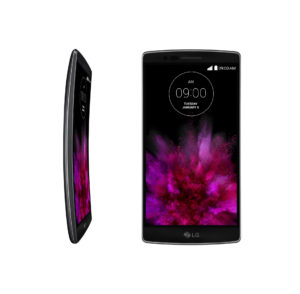
The downsides, however, are:
- The design lacks the modern edge of other flagship phones such as that of Samsung, or Sony, or HTC. The phone’s design doesn’t make it feel premium.
- Rear cover still easily accumulates dust – something that can easily irk those with OCD. The polished, plastic design is more gimmicky than useful, and scratches are more visible.
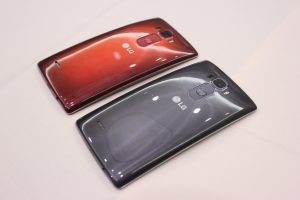
- Non-removable battery decreased from 3500mAh to 3000mAh because of the phone’s change in dimensions
- The P-OLED display remains limited in capacity and sometimes has distortions in the display. This shows that the display still has low cell luminance and is terribly inconsistent when it comes to colors.
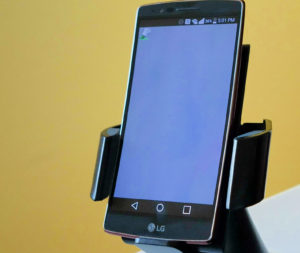
- The phone has poor brightness even at 100%. The auto brightness feature reveals a grainy quality and the display’s color distortion. Even the 0% brightness is unacceptable – it will still hurt your eyes especially when used in a very dark room.
Processor 4x A57 processors at 2GHz and 4z A53 processors at 1.6GHz
- Speakers
The external speaker of the G Flex 2 is remarkably clearer and has more power than the G3. The phone uses BoomSound-lite of Desire 820, and even as a mid-range product, it still has good quality. Similarly, the headphone audio of Qualcomm SoC provides clear and distortion-less sounds.
On the negative aspects, the headphone jack is more vulnerable to noise feedback from audible radio or clock when plugged into an external audio device.
- Battery life
Battery life is not a positive aspect of the G Flex 2. The high brightness of the device possibly contributes to the quick draining of the battery, as well as the heat problems of the Snapdragon 810 processor.
- Camera
The camera of the G Flex 2 barely had any developments from the G3. It is equipped with an optical image stabilization mode, a laser auto-focus, and a dual-flash that makes the camera among the best in the market.

Daytime images are of excellent quality, and the HDR mode provides vivid photos as well. Night shots, similarly, are also good particularly with the aid of the laser auto-focus. It’s not a photographer’s phone, but the quality of the photos are really excellent for users who love taking snapshots. A development in the G Flex 2 is that the selfie mode is gesture based, which people find to be a very useful feature.
On a less positive note, some issues with the camera of the G Flex 2 are:
- It till lacks configurability
- No shutter speed, white balance, aperture, or ISO options
- No video settings such as choice of frame rates, HDR, or slow-mo. In this aspect, LG is still among the worst.
- Processor
The Qualcomm Snapdragon 810 chipset used in the G Flex 2 is the first ever in the market. Aside from rumors that the processor had been rejected by Samsung in favor of its in-house Exynos, the processor also suffers from thermal problems. Qualcomm used ARM reference design for the Snapdragon 810, making it the first Qualcomm chip that does not use the company’s own design.
- Phone is prone to throttling – which the G Flex 2 does by about four CPU benchmarks, makings its single core performance 30% lower and its multicore performance 15% lower. In Geekbench 3, the G Flex 2 has a 50 to 60% drop in single core CPU performance.
- Phone is prone to heating.
- The G Flex 2 feels jerky and is slower than expected.
- Software
The interface design, layouts, and iconography of LG is almost always expected and on the safe side. As a result, the Lollipop doesn’t look or feel as it should be. The Lollipop notification bar in the Korean G Flex has its own brightness and call volume sliders, but this is not present in the American carriers.
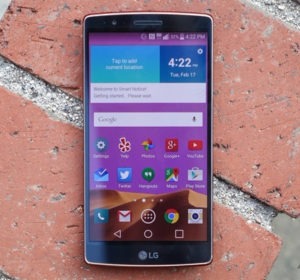
The good stuff:
- No popup volume controls, settling instead for the volume sliders.
- Existence of three screen color modes
- An adaptive screen tone for the display
- Removable bloatware (at least, on the Korean G Flex)
Some poor points regarding the software include:
- The priority notification system of Google – called “do not disturb” mode by LG – has been used in the G Flex 2. Hence, the device has no silent (no vibrate) mode, and you have to manually turn the vibration off.
- Scrollable power toggles are outdated (2011).
- The Glance View – where the top of the display lights up when you drag your finger on the screen – is useless and
On the bright side, the phone has a smaller size that makes it more appealing to consumers. It also has a brighter display and a better Gorilla Glass 3 that has higher resistance to shock. The camera is also excellent, but it was just a repeat of the phone’s predecessor.
The G Flex 2 is still less competitive than other flagship phones in the market, and it seems to be more of a distraction until LG releases the G4. The display remains to be the worst feature of the G Flex 2, plus the Snapdragon 810 processor is still not exceptional.
Tell us about your own experience with the G Flex 2 by commenting below.
SC
[embedyt] https://www.youtube.com/watch?v=PO7ZVeEVnmA[/embedyt]
